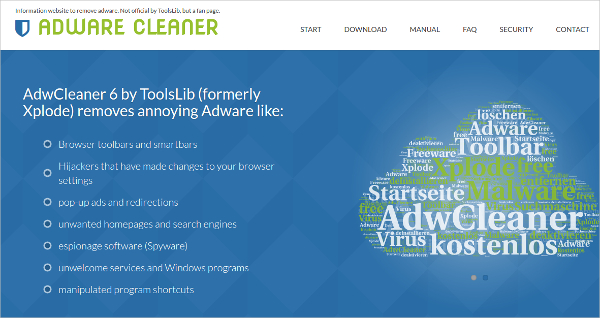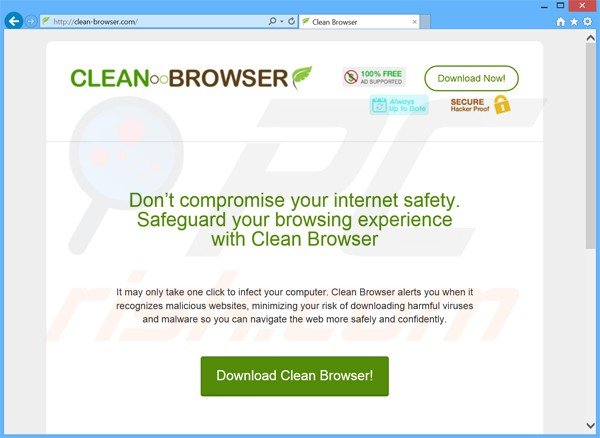

- #Adware cleaner 2014 how to
- #Adware cleaner 2014 install
- #Adware cleaner 2014 software
- #Adware cleaner 2014 free
- #Adware cleaner 2014 windows

Some adware installs itself within your browser, in which case you won’t find them in Control Panel. If that doesn’t do the trick, then chances are the original program (the music player in our case) was the adware, and you’ll need to uninstall that one. To do this, simply go to Control Panel -> Uninstall a program -> Select program you wish to uninstall. Quite often, all you have to do is simply uninstall the extra software.
#Adware cleaner 2014 software
In most cases, the adware is that extra program you installed on top of the software you needed in the first place.
#Adware cleaner 2014 install
For instance, if you download a music player, you might get an extra option on the installation page that asks if you also want to install a browser toolbar or some other type of software.
#Adware cleaner 2014 free
This high percentage of adware infections makes sense once you see how it spreads.ĭepending on the type of adware you’re infected with, there are two possible paths to remove them: Remove adware from unethical companiesĪdware from companies usually comes as add-ons to free software you might download. Your default search engine was changed.Īccording to Cisco, nearly 75% of organizations have suffered an adware infection.
#Adware cleaner 2014 windows
New browser windows open up every so often.

#Adware cleaner 2014 how to
How to recognize an adware infectionĪdware is fairly easy to diagnose compared to other types of malware. If you want to learn more, be sure to check out Google’s in-depth report on the matter. There’s a lot of money going around and many cybercriminals want a part of the action, either by gaming the system with ads that break the guidelines, or by committing outright fraud.įor instance, in 2016 Google took down nearly 1.7 billion that didn’t comply with their guidelines, such as illegal gambling operations, weight loss scams and more. The size of the online advertising industry in 2016 was estimated at 200 billion dollars, and expected to grow to around 340 billion by 2020. Some companies don’t even need to be bought, they just do a U-turn in their business strategy.Īds are big business. Quite frequently, companies will buy out the developers of popular products, as seen in this Ars Technica article we’ve screenshotted below, and then infect them with tracking features, ad injections and other data harvesting methods. On top of that, the adware may be part of a malware cocktail, which can include rootkits, Trojans and more.Īnd even if adware comes standalone, it might be used in the future as a backdoor to lead to further infections. Malicious hackers however design their adware to be much harder to remove, and require the use of an adware cleaner or removal tool. Most of the time, they do this to learn more about their customer or feed you some half-relevant ads. Cybercriminals who completely disregard the law and just want to make a quick buck.Īdware from the first category tends to be easier to remove, since the company in question is more restrained in its unethical behavior. Companies that use unethical business practices.Ģ. The consent part is an important aspect of adware, since a program that informs you of its advertising activities isn’t classified as adware, but as regular software that uses ads as a monetization or growth strategy.Īdware can roughly be grouped in two big categories, depending on who spreads them:ġ. What is adware? Definition and characteristicsĪdware is a type of malicious software (or malware, for short) that quietly collects information about you, such as browsing history and search results, while at the same time feeding you ads, and it does all of this without asking for your consent. Many times, you’ll have to thank adware for that. So when you’re doing your own thing and peacefully browsing the web, you’ll come across something like this: However, some advertisers try to solve this problem not by making more entertaining or relevant ads, but by being obnoxious. Chances are you can’t remember more than one advertising poster present on your way to work.Īdvertisers know this, so they try to make their ads stand out as much as possible, just so they can get some attention time from you. Everybody hates ads, but we’ve kind of gotten used to them and have developed something called advertising blindness, which kind of stops us from noticing them.


 0 kommentar(er)
0 kommentar(er)
